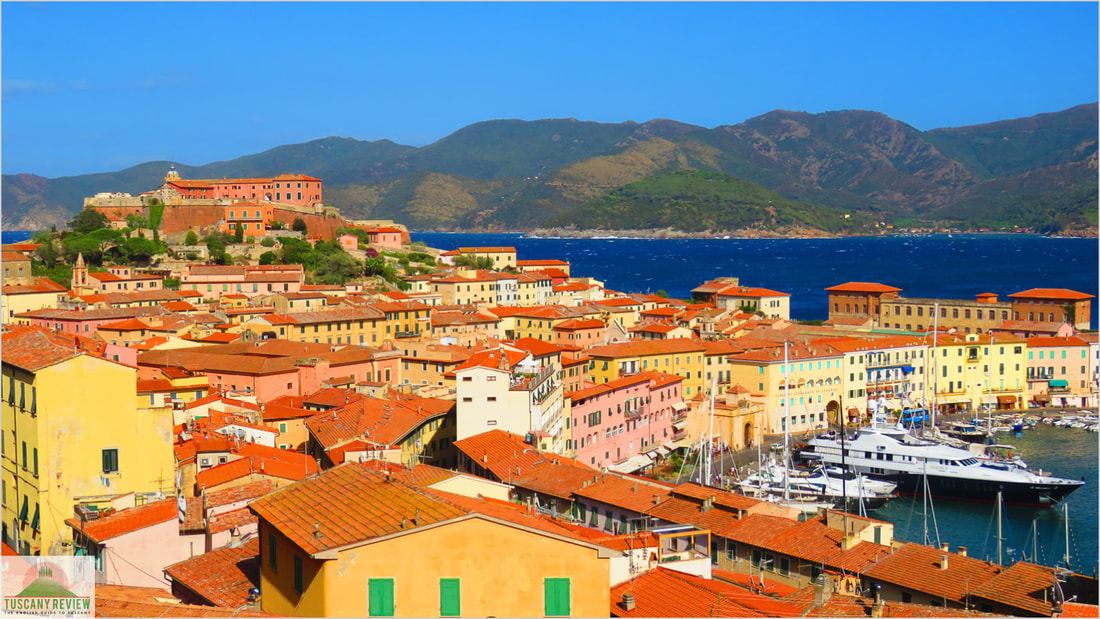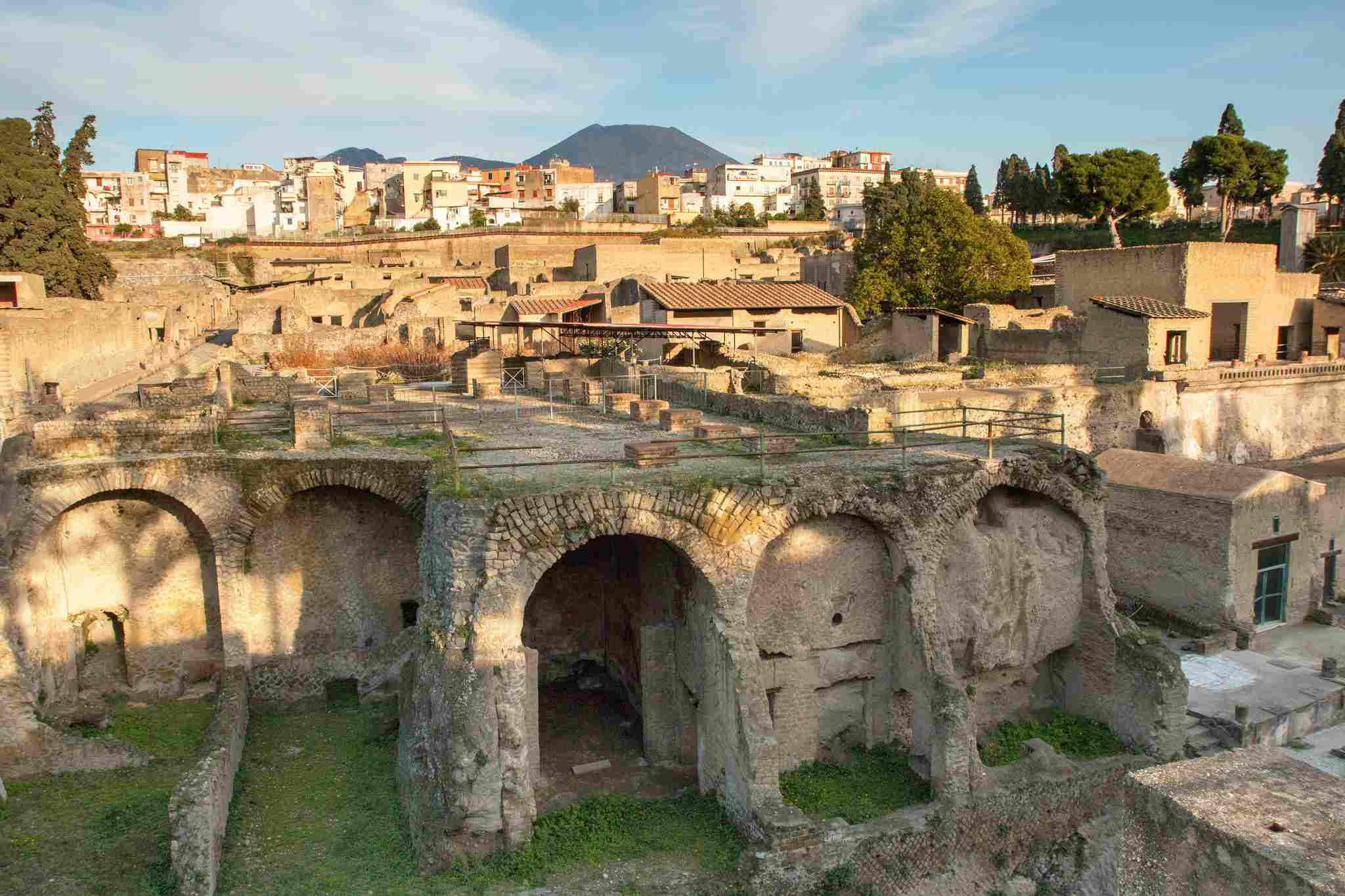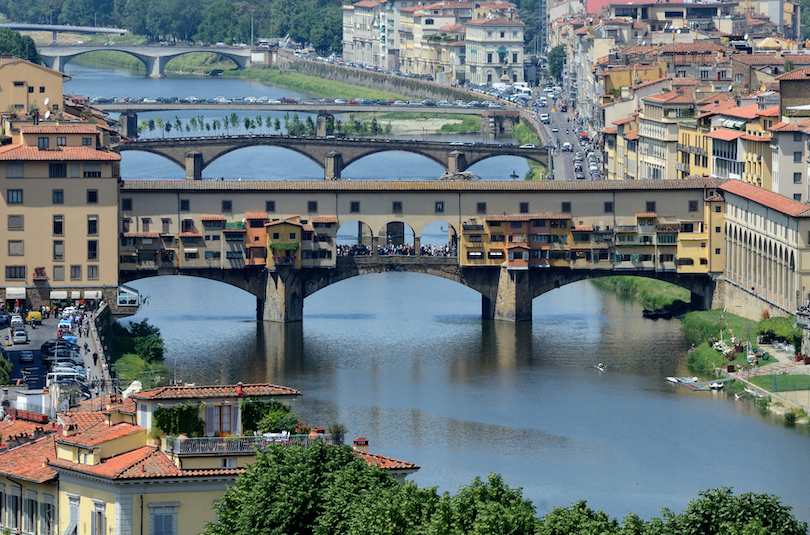Colosseum
.jpeg)
The Colosseum is an elliptical amphitheater located directly east of the Roman Forum in the heart of Rome, Italy. Despite its age, it is the largest standing amphitheater in the world and is the largest ancient amphitheater ever constructed. Emperor Vespasian (r. 69–79 AD) started construction in 72[1] and his successor and heir, Titus (r. 79–81 AD), finished it in AD 80.During Domitian's rule (r. 81–96), additional changes were enacted.Later classicists and archaeologists called the amphitheater the Flavian Amphitheatre (Latin: Amphitheatrum Flavium; Italian: Anfiteatro Flavio [aʱfiteˈaːtro ˈflaːvjo]) because it was associated with their family name (Flavius), and the three emperors who patronized the work are known as the Flavian dynasty. The Colosseum is composed of brick-faced concrete, tuff (volcanic rock), and travertine limestone. With an average attendance of about 65,000, it could accommodate between 50,000 and 80,000 spectators at different times during its history. It was used for public spectacles such as gladiatorial fights, animal hunts, executions, reenactments of well-known battles, dramas based on Roman mythology, and short-lived mock sea battles. Early in the Middle Ages, the structure was no longer utilized for entertainment. Later on, it was repurposed as a castle, a quarry, a Christian shrine, residences, workshops, and quarters for a monastic order.
The Colosseum is still a well-known representation of Imperial Rome and was named one of the New 7 Wonders of the World, despite being severely damaged by earthquakes and stone thieves stealing spolia. Every Good Friday, the Pope leads a torchlit "Way of the Cross" procession that begins in the vicinity of the Colosseum, making it one of Rome's most visited tourist destinations with ties to the Catholic Church. The Italian version of the 5 euro cent coin has an image of the Colosseum.
This enormous amphitheater, the biggest of its kind ever constructed by the Roman Empire and the largest to survive, continues to serve as a model for sports facilities to this day. Vespasian constructed the Colosseum in 72 CE, and his son Titus expanded it by adding a fourth storey. The Colosseum served as a stage for public performances, including simulated naval combat.
There were two more underground storeys with tunnels, rooms, cells, and passages that housed gladiators, laborers, wild animals, and storage, all covered by a hardwood floor measuring 83 by 48 meters.Numerous movies, artworks, and video games have featured the Colosseum. It appears in movies like Godzilla x Kong: The New Empire, Roman Holiday, Gladiator, The Way of the Dragon, and Jumper.The location was a level spot on the bottom of a low valley that flowed through an artificial lake or marsh and a canalized stream between the Caelian, Esquiline, and Palatine Hills.The region was heavily populated by the second century BC. After the Great Fire of Rome in 64 AD destroyed it, Nero took control of a large portion of the region to expand his own territory. On the property, he constructed the imposing Do
mus Aurea, which was encircled by porticoes, pavilions, and gardens, and in front of which he constructed an artificial lake.
Taking public transit to the Colosseum
The northern parts of Rome are where lines 38 and 75 leave off. The Colosseum is accessible by bus 175 and 271 from the south.
Located directly in front of the entrance at Piazza del Colosseo, the Colosseum has its own bus station.
There are no other bus choices.
The best time to visit the Colosseum is in the fall, when Rome experiences milder temperatures and less visitors. In September, the crowds begin to thin out as the summer draws to a close in August. This period before the Christmas rush is perfect for exploring Rome and its major attractions like the Colosseum. Hotels near FH55 Grand Hotel Palatino,Hotel Hiberia,Hotel Palazzo Manfredi ,Hotel Borromeo,Duca d'Alba Hotel,Hotel Labelle
By Admin
21 May 2025



.jpeg)
.jpeg)
